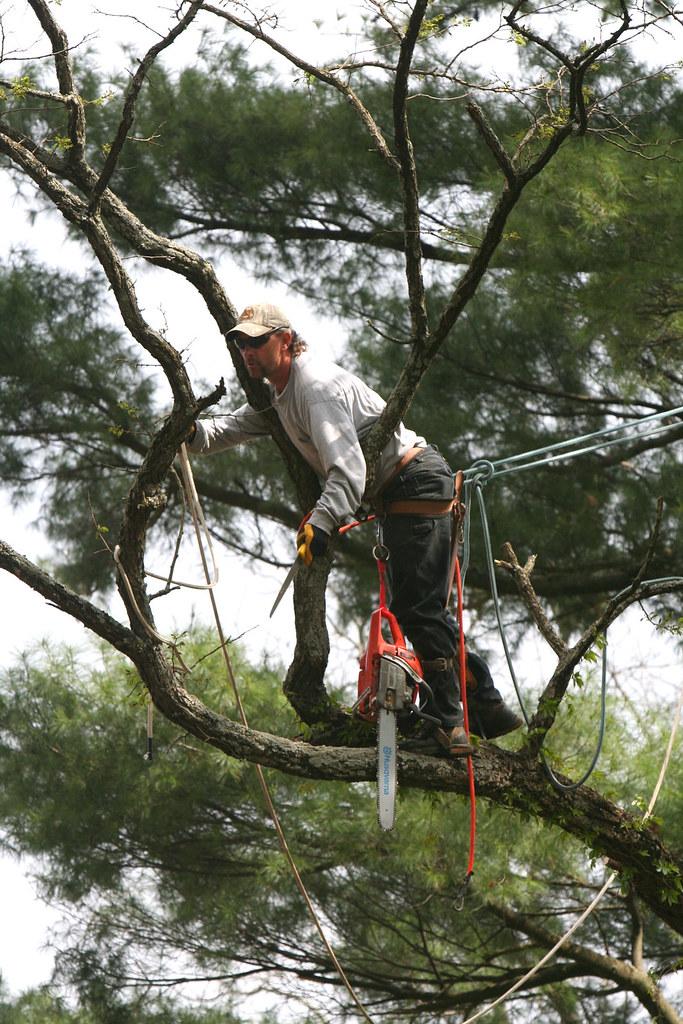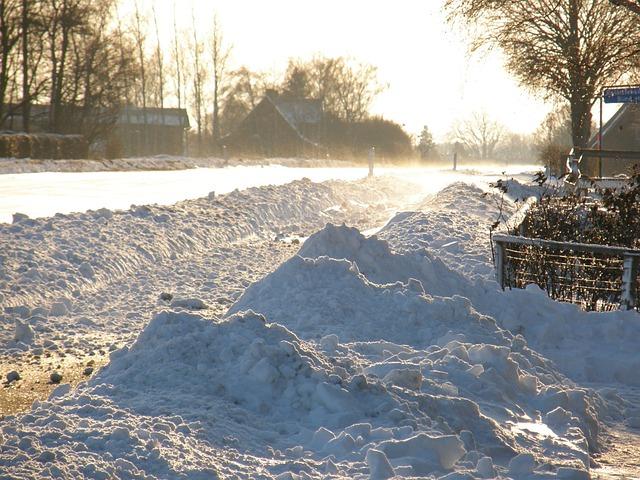Arborist reports serve as a crucial tool in assessing the health of trees and maintaining their well-being. In order to ensure the proper care and maintenance of trees, understanding the key elements of these reports is essential. This article will delve into the importance of arborist reports in tree health assessment, shedding light on their critical role in preserving the beauty and vitality of our natural surroundings.
Table of Contents
- Key Components of Arborist Reports
- Importance of Regular Tree Health Assessments
- Detailed Analysis of Tree Health and Potential Risks
- Recommendations for Tree Maintenance and Preservation
- Utilizing Arborist Reports for Future Planning
- Understanding the Role of Arborists in Tree Care
- Q&A
- Conclusion
Key Components of Arborist Reports
Arborist reports play a crucial role in assessing the health and condition of trees. These reports are detailed documents that provide valuable information about the trees on a property, including their species, size, age, condition, and any potential risks they may pose. By analyzing the key components of an arborist report, property owners and tree care professionals can make informed decisions about how to best care for and maintain their trees.
Some of the key components that are typically included in arborist reports are:
- Tree Identification: This section provides details about the species of trees on the property, including their common and scientific names.
- Tree Health Assessment: Arborists will evaluate the overall health of the trees, looking for signs of disease, decay, or pest infestations.
- Risk Assessment: This part of the report will identify any potential hazards that the trees may pose, such as leaning branches or weak root systems.
Importance of Regular Tree Health Assessments
Regular tree health assessments are essential in ensuring the longevity and vitality of trees in any landscape. Arborist reports play a crucial role in these assessments, providing detailed insights into the overall health and condition of the trees. By conducting regular assessments, arborists can identify potential issues early on and implement appropriate measures to prevent further damage or decline.
During a tree health assessment, arborists evaluate various factors such as tree structure, leaf health, root system, and overall appearance. They also assess environmental stressors, pest infestations, and disease susceptibility. By compiling all this information into a comprehensive report, arborists can provide valuable recommendations for tree care and maintenance. These reports serve as a roadmap for property owners and landscape managers to effectively manage tree health and ensure a thriving landscape.
In addition to identifying existing issues, arborist reports also help in monitoring the progress of any treatments or maintenance measures implemented. By regularly reviewing these reports, property owners can track the overall health and condition of their trees over time. This proactive approach not only helps in preserving the aesthetic value of the landscape but also contributes to the overall health of the ecosystem. Regular tree health assessments, backed by detailed arborist reports, are indeed a key component in maintaining healthy and vibrant trees for years to come.
| Tree Health Assessment Factors: | Tree structure |
| Leaf health | |
| Root system | |
| Environmental stressors | |
| Pest infestations | |
| Disease susceptibility |
Detailed Analysis of Tree Health and Potential Risks
When it comes to assessing the health of trees on your property, arborist reports play a crucial role. These reports provide a detailed analysis of the overall health of your trees, highlighting any potential risks or issues that may need to be addressed.
Arborist reports typically include a thorough inspection of the tree’s canopy, trunk, and roots. They may also analyze factors such as tree species, age, and location to determine the overall health of the tree. By examining these various elements, arborists can identify any signs of disease, infestation, or structural weakness that could pose a threat to the tree’s health.
With this valuable information in hand, property owners can make informed decisions about how to properly care for their trees and address any potential risks. Whether it’s pruning, pest control, or removal, arborist reports provide the necessary insight to ensure the continued health and safety of your trees.
Recommendations for Tree Maintenance and Preservation
Arborist reports play a crucial role in assessing the health and overall well-being of trees. These detailed reports provide valuable information about the condition of trees, helping property owners make informed decisions about tree maintenance and preservation. By conducting a thorough tree health assessment, arborists can identify potential issues such as diseases, pests, structural problems, and environmental stressors that may be impacting the health of trees.
Some key components included in arborist reports are:
- Detailed tree inventory
- Assessment of tree health and condition
- Identification of potential risks and hazards
| Tree Species | Health Assessment | Recommendations |
|---|---|---|
| Oak | Good condition | Regular pruning and mulching |
| Maple | Early signs of disease | Treatment and monitoring |
Utilizing Arborist Reports for Future Planning
Arborist reports are essential tools in evaluating the health and condition of trees on your property. These reports provide valuable insights into the overall well-being of your trees, helping you make informed decisions about their care and maintenance. By , you can take proactive measures to ensure the longevity and health of your trees.
Some key components of arborist reports include:
- Tree species identification – Knowing the specific species of trees on your property can help determine their specific needs and vulnerabilities.
- Health assessment – Arborists assess the overall health of trees, looking for signs of disease, pests, and structural issues that may impact their well-being.
- Recommendations for care – Arborist reports often include recommendations for pruning, fertilization, watering, and other maintenance practices to improve tree health.
| Tree Species | Health Assessment | Recommendations |
|---|---|---|
| Oak | Good health, minimal pest damage | Pruning and fertilization recommended |
| Maple | Signs of disease in leaves | Tree removal suggested |
Understanding the Role of Arborists in Tree Care
Arborist reports play a crucial role in assessing the health of trees and guiding tree care practices. These reports are comprehensive evaluations conducted by certified arborists, detailing the condition of trees, potential risks, and recommended treatments. They provide valuable insights into the overall health and structural integrity of trees, helping property owners make informed decisions about tree management.
Key components of arborist reports include:
- Tree Identification: Each tree on the property is identified and assessed individually, noting species, size, and age.
- Health Assessment: Arborists evaluate the overall health of trees, looking for signs of disease, infestation, or decline.
- Risk Assessment: Potential hazards such as weak branches, leaning trees, or root damage are identified to prevent accidents.
| Tree ID | Species | Health |
|---|---|---|
| 1 | Oak | Good |
| 2 | Maple | Fair |
| 3 | Pine | Poor |
Q&A
Q: What is an arborist report?
A: An arborist report is a detailed assessment of a tree’s health and condition conducted by a certified arborist.
Q: Why are arborist reports important in tree health assessment?
A: Arborist reports provide vital information about a tree’s overall health, structural stability, and potential risks, helping property owners make informed decisions about tree care and maintenance.
Q: What typically goes into an arborist report?
A: An arborist report typically includes information on tree species, age, size, overall health, presence of diseases or pests, structural integrity, recommended maintenance practices, and any potential hazards.
Q: How often should arborist reports be conducted?
A: Arborist reports should be conducted on a regular basis, ideally every 1-3 years, to monitor any changes in tree health and address potential issues promptly.
Q: Can property owners conduct their own tree health assessments?
A: While property owners can visually inspect their trees for signs of distress, a professional arborist has the expertise and equipment to conduct a thorough assessment and provide accurate recommendations for tree care.
Q: How can property owners find a reliable arborist to conduct an arborist report?
A: Property owners should look for certified arborists with a good reputation, experience in tree care, and proper insurance coverage. Referrals from friends, neighbors, or local tree care organizations can also help in finding a reliable arborist.
Conclusion
In conclusion, arborist reports play a crucial role in evaluating the health and condition of trees. By conducting thorough assessments and providing detailed information, arborists help property owners make informed decisions about the care and management of their trees. Investing in regular arborist reports can ultimately contribute to the overall health and longevity of trees, ensuring a safe and sustainable landscape for years to come. If you have any concerns about the health of your trees, don’t hesitate to consult a certified arborist for a comprehensive assessment. Your trees will thank you for it.
Simpsons Tree Services, Servicing Melbourne’s North Eastern Suburbs
Book a quote online at www.simpsonstrees.com.au




